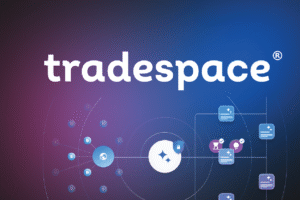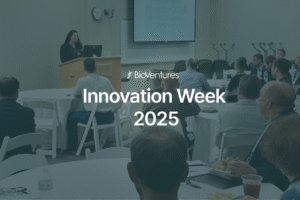Ideas are fantastic and they come usually from pain points that we experience in our everyday lives. If a pain point becomes big enough, we design a solution to help alleviate or make the process better.
When we think about ideas, as scientists, we think about the scientific method. And the entrepreneurial method is very similar. We have an idea, we create a hypothesis, and then we test the idea by that hypothesis in entrepreneurship.
One way to test your idea is through customer discovery or talking to people to validate it. But some people are hesitant to do that. Is there a problem with sharing your idea?
Sharing ideas person to person in communication is usually fine, most venture capital firms won’t even sign a nondisclosure agreement when talking to entrepreneurs about their idea. Where we must be careful is we don’t want public disclosures of ideas.
Public disclosure is defined as a presentation of the material with enough information that someone reasonably skilled in the art can recreate it. This presentation can be made in writing, audio, or visual form. If the invention has been made public in any of these formats, rights to patent that piece may be lost.
Now, you have tested your idea. What is next?
Invention Disclosure Form
If you have an idea for an invention, the first step is filling out an invention disclosure. On the BioVentures website, you will find the form for the invention disclosure, where we are going to ask you a series of questions to help us understand your idea.
The invention disclosure is the basic entry-level questionnaire that helps us keep of the number of ideas that come through our office and how we help the inventors. If you don’t know the answers to all the questions, that is okay. We want you to do your best possible work in the field.
One of those questions is going to be about patentability. It may be hard to know what is out there for being patentable since there are multiple patent databases that you can use to do your research and you may not know what you are looking for. The questions that you need to answer are:
- Are there any pieces of technology that may be novel or patentable?
- Are there any ideas to build on what you are doing, seeing what folks have done before?
The website we recommend doing the research for your invention is Espacenet. This website includes a lot of different information about patents, and it is more user-friendly than other ones. You can check this tutorial on how to do your query on Espacenet.
Technology Assessment Report
After you have submitted the invention disclosure, we are going to set up some time to meet with either the BioVentures team or our technology team to create the technology assessment report (TAR).
The TAR is a structured document that looks not only at the intellectual property that you’ve provided but also at the potential market size and helps us come up with a comprehensive initial evaluation on the technology. If you have a device, we have an engineering team that’s also going to look and help come up with what are the costs for the next milestones.
Our goal is to create a document that’s useful and meaningful to you as we start to develop this technology together.
After we started doing this, the next thing that becomes important is customer discovery and figuring out what refinements that we need to make to make this successful.
Our team may come up with ideas for you. We’re a mixture of clinicians, scientists, and engineers and we evaluate technologies routinely. In doing so, we learn some of the market trends, and we’re here to help.
Just Do It
The main thing is just to start.
Let us know about your idea in the way that’s most convenient for you. We prefer the technology or the invention disclosure and report because that tracks everything in our records. If you think it’s too early for that, just send us an email at bioventures@uams.edu and ask to talk with a member of the team.
If you have filled the invention disclosure form, even if it is only partially complete, send that along so that we can have a document to reference during our meeting and review.



